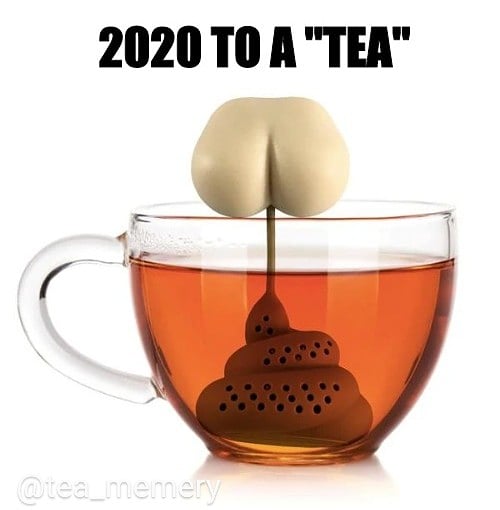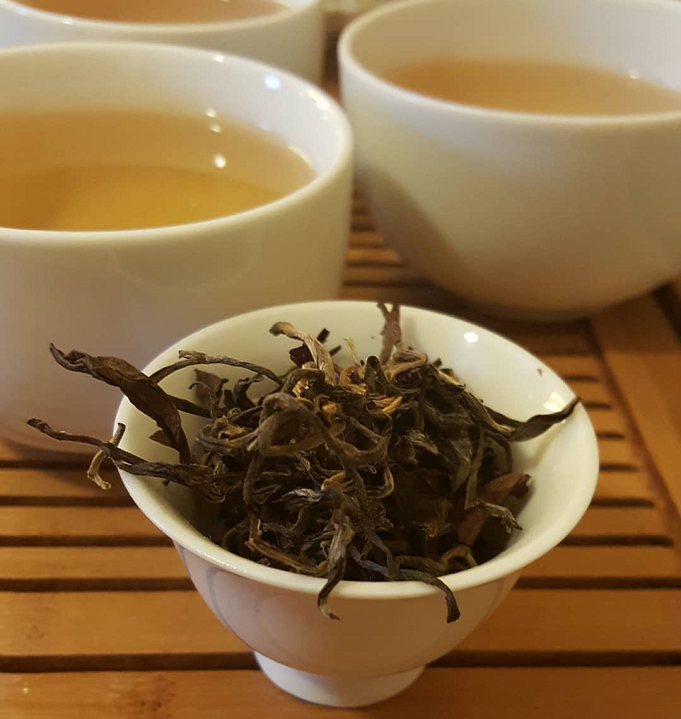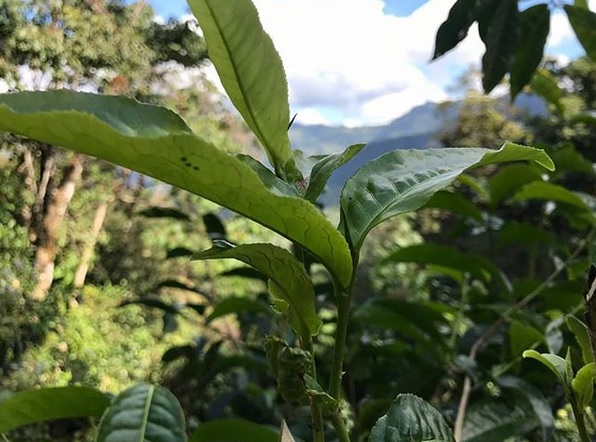Teas from the northeastern state of India called Assam are known for many things. First and foremost are their robust and malty characteristics. Second (and this is one I’ve noticed) is their lean towards – how to put it – tiramisu sweetness. Very odd. Part of their unique character comes from the varietal of tea plant used – one that is actually native to the region. Unlike Darjeeling, which uses Chinese cultivars, Assam has its own native bush, the Camellia sinensis var. assamica. Until the British came along, this shrub was only used for Ayurvedic purposes.
To me and a few others in my tea circle, Assams hold the honor of being the second manliest type of tea in existence. First place, of course, goes to the pine-smoked monstrosity that is Lapsang Souchong. I have since sampled quite a few single estate offerings – some better than others – and all have put a spring in my step thanks to the s**tstorm of caffeine they impart. But no one told me…
That there was a white Assam out there.
White teas are my muse. They started me on the path of tea exploration; they continue to haunt and heighten it. I have tried whites from China, Sri Lanka, Darjeeling, and even here in the Pacific Northwest. All were one shade of awesome or another, but I had never had a white Assam.
It’s white buffalo-esque existence came to my attention upon visiting a local tea shop. I was perusing the vast array of loose leaf whites when I came across it. So shocked was I that I could barely form the words, “I’ll get an ounce of this.”
The teller said, “That’ll be $15.”
Like a Tex Avery cartoon, my jaw dropped. I ended up leaving with just my do-it-yourself teabags. My quest was at an end by way of moth-wallet.
A year later, I received a white tea variety pack from Canton Tea Co. They always treated me super well. Of the unique teas in the batch, I expected the Darjeeling white, the Silver Needle, and the White Peony. (I adored all of ‘em.) Quietly tucked away in the mailbag, though, was something I wasn’t expecting. Scrawled in Asiatic-looking script were the words “Assam White”.

I shrieked. My brother/roommate jumped at the sound. His dog looked at me quizzically. My cat’s tail bristled in alarm. I tried to explain the significance of this one shiny, silver bag of “Awesome”…but it all came out like geeky sputters.
I brewed it up the next day.

The dry leaves looked like Silver Needle white tea by way of lawn-clippings – small, reed-like, and light green. The aroma also didn’t give off anything particularly extraordinary. It smelled like grass with a bit of a melon-mint profile – white tea-ish but not uncharacteristic. As a result, I brewed it up as I would any normal white tea; 1 heaping teaspoon in 8oz. of 165F water for three minutes. Big mistake.
I basically brewed…water. It had no character to speak of whatsoever. This being made from the same burly leaf Assam blacks were, though, I knew I’d done something wrong. I did it again, but this time I dialed the temperature on my water kettle to 180F. This was pushing it, but it was for science, damn it!
The results were pure…well..awesome.

Okay, if you want specifics, the liquor brewed to a transparent gold with a strong nose of parsley, sage, rosemary and F**KING AWESOME!!! It had the character of other white teas but with some of the malt that made Assam blacks so delectable. It was like someone said, “Melon meet Malt. Now…FIGHT TO THE DEATH!” Imagine a Viking in a tu-tu, and you’ll get the idea. Sure, he’s wearing a tu-tu, but you wouldn’t call him a sissy. This was no sissy white tea.

Further proof of its lack of sissy-ness arrived by steep five. Yeah, you heard right. Steep f**king five. This pitbull puppy of a tea lasted five infusions without letting go of its flavor. I only ran into one other white tea that lasted that long, and that was from the U.S. of A. Most taper off by steep three.
Canton Tea Co. mentions that this white tea is from the Mothola tea estate, one of the only estates in Assam to produce white teas. In other words, this was a rare pleasure indeed, and that sort of explains the high price tag for Assam whites in general. Still, considering how much bang you get for that buck (five steeps!), I’d say fork it over. This was not a white tea for wimps…even though I am one.
To buy Canton Tea’s Assam White, go HERE! (If you dare…)










